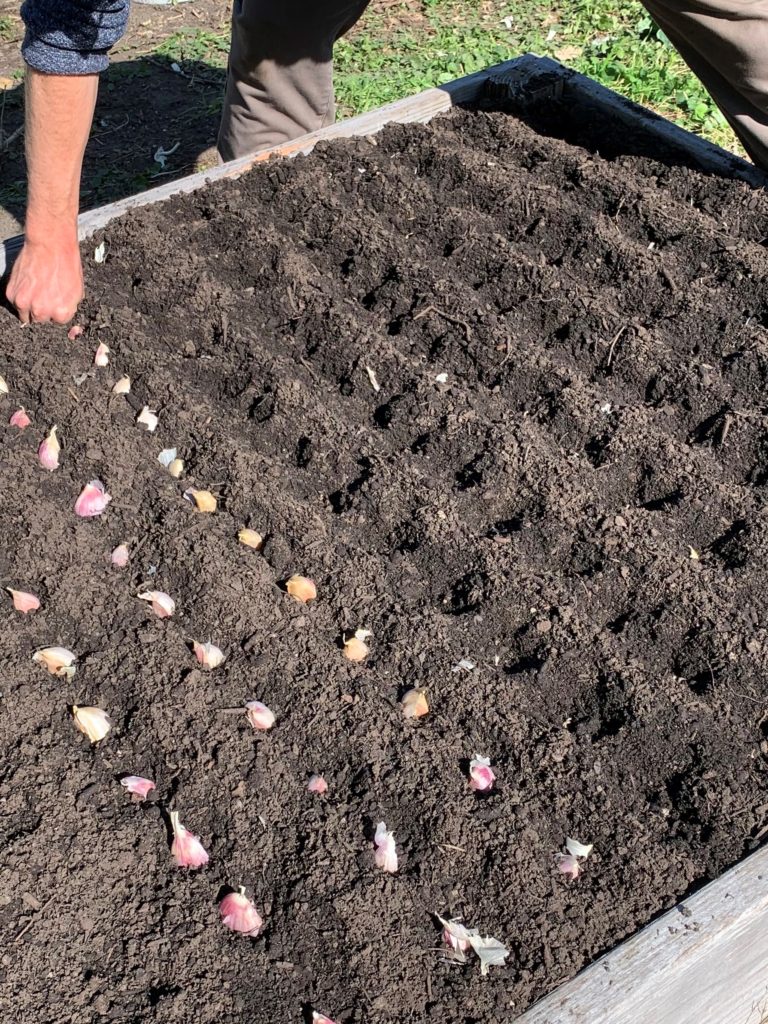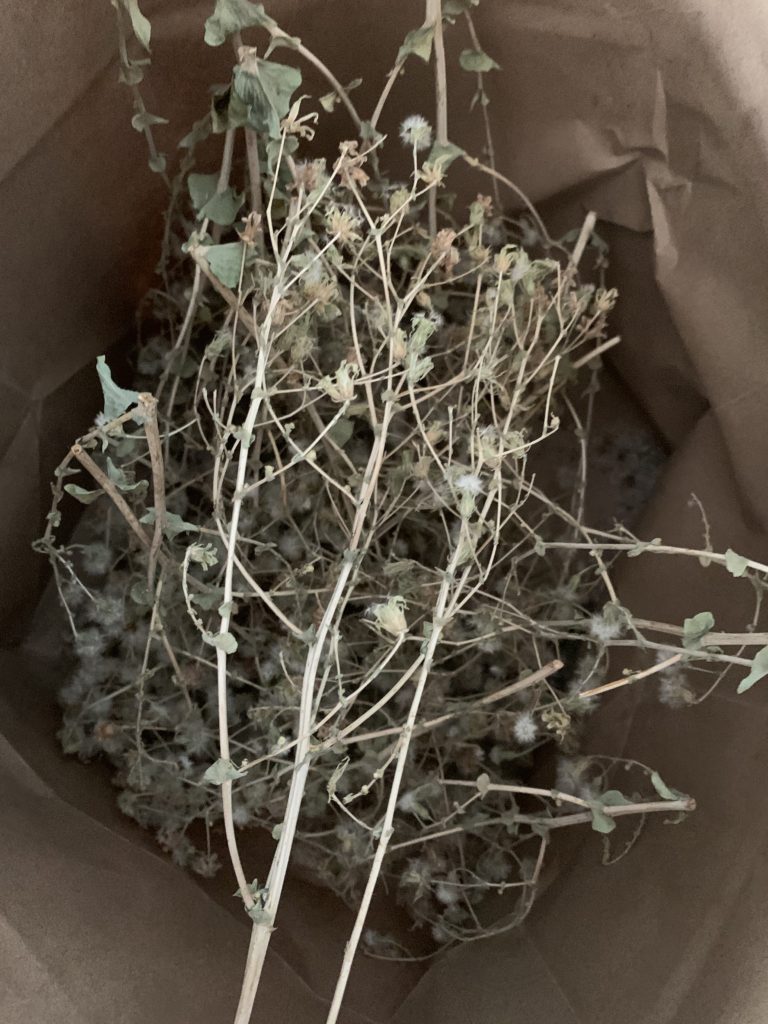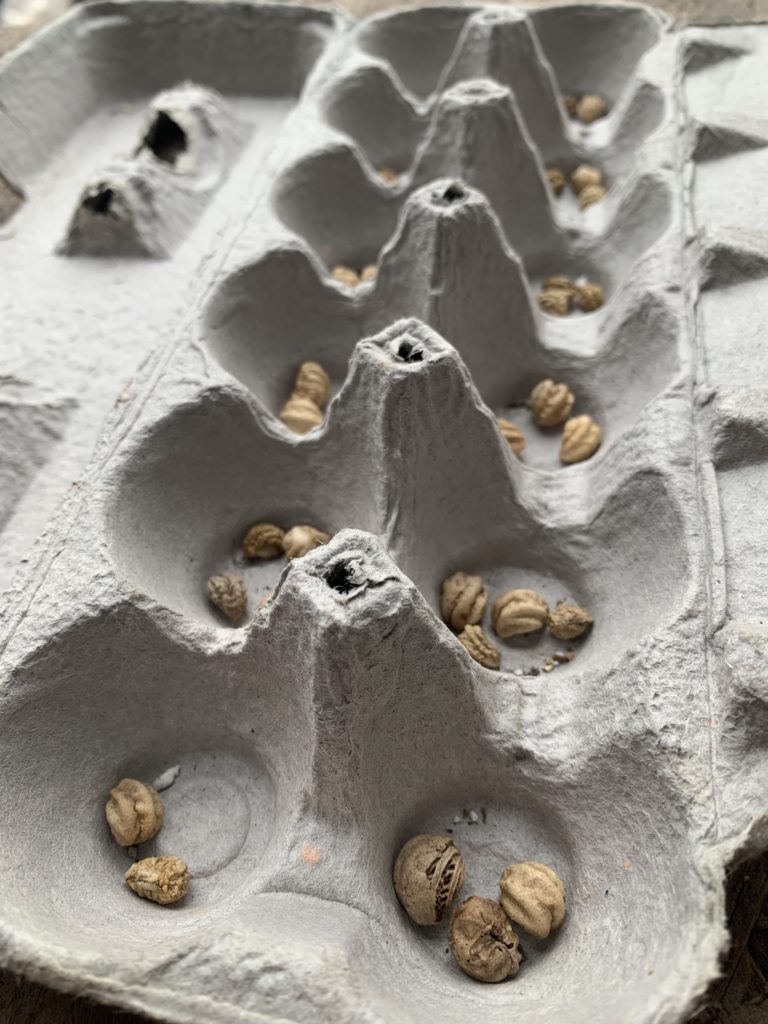
With the projected first frost date approaching quickly , and the end of Daylight Saving not far behind, it’s time to prepare gardens for the winter months. While shorter days and cooler temperatures signal the end of the summer harvest, there is still time to reap the bounty of a fall garden and prepare for a productive spring.
Here’s how:
Harvest and save seeds
Did your lettuce bolt during the heat of summer? Or perhaps your basil flowered while you were out of town? Don’t worry – these are gifts from the garden! Try letting leafy greens, flowers, or herbs continue to grow without pruning or picking. Then, harvest their seed pods for storage and use next year. Check out MSU Extension’s seed harvesting guides for various plants.
Moisture is the enemy to seed storage, so be sure to let seeds dry fully and store them somewhere cool, dark, and dry. Reuse cardboard egg cartons, paper bags, and envelopes as eco-friendly seed sorting and storage containers!
Do some fall planting
Now is the time to plant bulbs and perennials for a colorful show next spring. Daffodils, tulips, and crocuses are just some examples of early- to mid-spring flowers grown from bulbs that can be planted now until the first frost. Shop your local garden center or online from retailers like Michigan Bulb Co.
If you’re a resident of Detroit, Hamtramck, or Highland Park, TLD Partner, Keep Growing Detroit, offers native perennials for sale by the pot or flat through their Garden Resource Program. Native perennial flowers and grasses work double-duty in the garden, adding visual interest and providing critical habitat for pollinators.
If you prefer food to flowers, try planting garlic. Sow individual cloves (seed garlic) in October/November, and enjoy the curly garlic scapes that pop up the following May and the full garlic bulbs, which will be ready to dig up and cure by July. Petoskey’s Bear Creek Organic Farm sells multiple varieties of seed garlic available through their online store.
Top up garden beds
Adding compost to garden beds and mulching with straw or wood chips helps insulate bulbs and plants through the coldest months, retains moisture, and promotes overall soil health. Keep an eye out for straw bales (they’re often for sale as holiday decor this time of year), or contact a local tree service or garden supplier to see if they have wood chips available. You can also use any cardboard boxes you’ve got laying around.
First, add fresh compost to your garden beds. Then lay cardboard over the surface. Cardboard serves as a biodegradable weed barrier and further insulates any bulbs or perennials you’ve planted. Soak the cardboard thoroughly then top with a thick layer of wood chips and/or straw. Your perennial plants will be all tucked in for a cozy winter, and your garden beds will be ready for planting next spring.
How are you prepping your garden for the winter?
Deana Wojcik is a Content Strategist for Taste the Local Difference.


